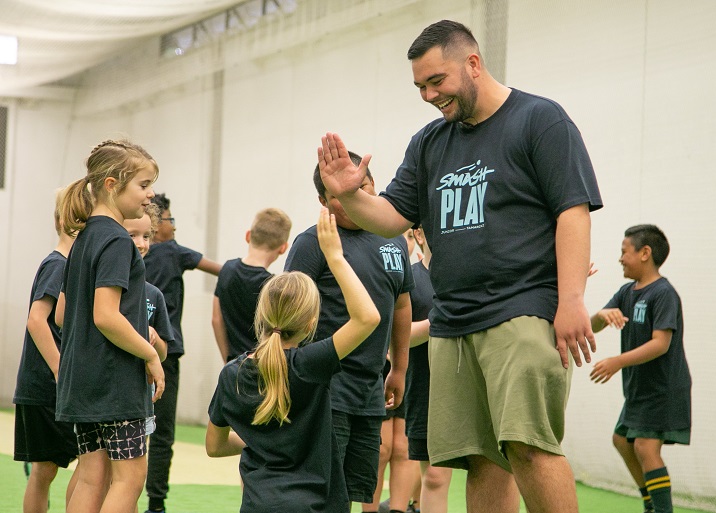




Associate Professor Ian Renshaw
School of Exercise & Nutrition Sciences
Faculty of Health
Queensland University of Technology
Australia
Download PDF of 'Session Design Principles'
I was delighted to be asked by New Zealand Cricket to come on board and help develop the Smash Play junior-tamariki programme.
For too long, sports have over emphasised teaching techniques through repetitive practice in junior programmes, at the expense of learning to play by playing games. The desire to drill skills to develop ‘the basics’ is often the norm in many environments, and cricket has been no exception. Sadly, we have seen the effect of this with falling participation rates and disengagement as children move through the ‘system’. Clearly, these existing approaches are not meeting the needs of children.
NZC have decided to evolve the way the game is being delivered to young New Zealanders.
NZC’s Smash Play approach to skill learning has gone ‘back to the future’ by combining some of the traditional ways that we have learned to play cricket with contemporary ideas in skill acquisition.
Essentially, NZC have taken on board the philosophy of backyard games and wedded it to the constraint led approach to skill acquisition.
Common to both approaches is the focus on play. Play is central to learning and provides the foundation for all aspects of our future lives. It is also simply fun, and children will play for hours given the opportunity. The beauty of play is that it is undertaken voluntarily. Consequently, children are free from overly prescriptive instructions, making it exciting and capturing the imagination. When children are playing you can hear and feel the BUZZ.

In backyard games of cricket, the ball is always moving, when bowled, when hit, when thrown. I believe that this is a fundamental requirement when learning to play cricket, the development of action and perception at the same time. While this might seem obvious, many practice scenarios separate this type of learning. This historic approach is fundamentally flawed. For example, to learn to hit the ball, batters first of all need to develop an understanding of where the ball will land and how it will behave once it has landed. Knowing, can therefore only come from facing a moving ball, additionally the body movement of a thrower or bowler is key to this development.
When children make up their own games of backyard cricket, a key collective goal is that no one player should dominate. It takes at least two to play, there is a need to make sure everyone is getting what they need from the game, so they won’t “take their ball home.” The rules are flexible with individuals being challenged at their own level. These games include maximal participation (everyone gets the chance to bat and bowl) which is essential for the development of everyone. Children adapt game rules to the environment in which they are playing and therefore learning by exploration to ‘find their own way’ is central to learning.
Backyard games also promote some key values to ensure that everyone continues to take part. NZC have captured these ideas in the Smash Play junior-tamariki programme too.
Many of the ideas underpinning backyard games sit neatly with the key principles of a Constraint-Led Approach. (You can find out more about this approach here (The Constraints Collective): In line with the NZ Coach Approach, NZC have built the programme based on combining the two approaches with the ultimate aim of ensuring that children learn to “Play the Kiwi Way.” The goal is to build the foundational skills and mindsets to develop skilful adaptable players while at the same time building better people.
As a result, Smash Play junior-tamariki includes carefully designed games that follow the philosophy and learning principles outlined earlier. I am confident the programme will meet the needs of your children to develop and find their own place in the game of cricket, enabling the freedom to be playful, consequently developing a love of being active and having fun with their friends. This is part of NZC’s vision to be ‘a game for all New Zealanders, a game for life’.
As an integral contributor to the programme, I am strongly invested in seeing it make a significant contribution to the future of cricket in New Zealand and create a positive framework to learn to play cricket for the participants, coaches, teachers, parents, their whānau and the wider community.
